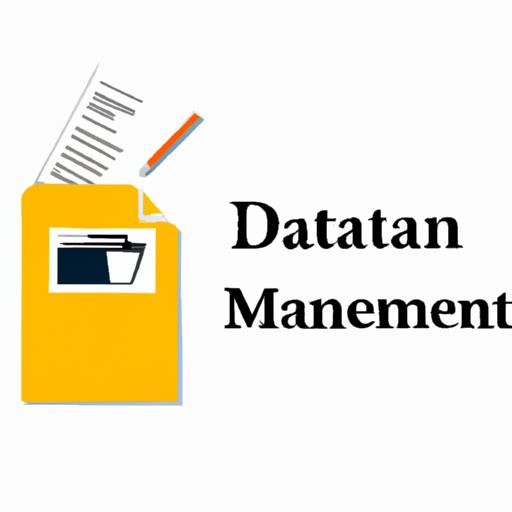Key Features to Look for in Reference Data Management Tools

In the world of data management, finding the right tools to handle reference data efficiently is crucial. These tools not only simplify the process but also ensure accuracy and consistency in your data. When considering reference data management tools, here are some key features to look for:
Data integration and cleansing capabilities
One of the primary functions of reference data management tools is to integrate data from various sources. Look for tools that offer seamless integration with different systems and databases. This capability allows you to consolidate and centralize your reference data, eliminating data silos and improving data integrity. Additionally, data cleansing features can help identify and resolve any inconsistencies or errors in your reference data, ensuring its quality and reliability.
Customization and scalability options
Every business has unique requirements when it comes to reference data management. Look for tools that offer customization options, allowing you to tailor the tool to fit your specific needs. Whether it’s configuring data fields, creating custom workflows, or defining access controls, the ability to customize the tool ensures it aligns with your business processes. Furthermore, scalability is essential as your business grows. Choose a tool that can handle increasing volumes of data and accommodate future expansions without compromising performance.
Data validation and enrichment functionalities
To maintain data accuracy and completeness, reference data management tools should provide robust data validation capabilities. These features help validate incoming data against predefined rules and standards, ensuring that only accurate and valid data is processed further. Additionally, tools that offer data enrichment functionalities can enhance your reference data by automatically supplementing missing information or enriching it with additional relevant data from trusted sources.
Support for multiple data formats and sources
In today’s data-driven landscape, businesses deal with data in various formats and from diverse sources. Look for reference data management tools that support multiple data formats, such as CSV, XML, JSON, and more. This flexibility allows you to handle different data types seamlessly. Furthermore, the ability to connect to various data sources, such as APIs, databases, and spreadsheets, ensures that you can easily gather, manage, and update your reference data from different systems.
By considering these key features, you can ensure that the reference data management tool you choose meets your business requirements and empowers you to effectively manage your data. In the next section, we will explore some of the top reference data management tools available in the market.
Top Reference Data Management Tools in the Market
When it comes to reference data management, having the right tools can make all the difference in effectively managing and utilizing your data. In this section, we will explore some of the top reference data management tools available in the market today.
Tool 1: Description, Features, and Benefits
One of the leading reference data management tools in the market is Tool 1. This powerful tool offers a comprehensive suite of features designed to streamline your data management processes. With its user-friendly interface, Tool 1 allows you to easily integrate and cleanse your data, ensuring accuracy and consistency throughout your organization. Additionally, it provides robust data validation and enrichment functionalities, enabling you to enhance the quality of your reference data.
One of the key benefits of Tool 1 is its customization and scalability options. Whether you are a small business or a large enterprise, this tool can adapt to your specific needs and grow with your organization. It supports multiple data formats and sources, allowing you to seamlessly integrate data from various systems and applications. With Tool 1, you can ensure data governance and compliance, making it easier to meet regulatory requirements and maintain data integrity.
Tool 2: Description, Features, and Benefits
Another top-notch reference data management tool is Tool 2. This tool offers a robust set of features designed to optimize your data management processes. With its advanced data integration capabilities, Tool 2 allows you to bring together data from different sources and formats, ensuring a unified view of your reference data. It also provides data cleansing functionalities, enabling you to eliminate duplicate or inconsistent data, improving data accuracy.
One of the standout features of Tool 2 is its data validation capabilities. It allows you to validate your reference data against predefined rules and standards, ensuring its quality and reliability. Moreover, Tool 2 offers data enrichment functionalities, empowering you to enhance your reference data with additional information for better decision-making and analytics.
Tool 3: Description, Features, and Benefits
Tool 3 is another excellent reference data management tool that deserves your attention. With its comprehensive suite of features, Tool 3 enables you to streamline your data management processes and improve data quality. It offers data integration and cleansing capabilities, allowing you to bring together disparate data sources and ensure consistency and accuracy in your reference data.
One of the notable features of Tool 3 is its support for multiple data formats and sources. Whether you are dealing with structured or unstructured data, Tool 3 can handle it all, making it a versatile solution for businesses of all types. Additionally, Tool 3 provides robust data validation and enrichment functionalities, empowering you to validate your reference data and enrich it with additional information for better insights and decision-making.
In conclusion, these top reference data management tools, including Tool 1, Tool 2, and Tool 3, offer a range of features and benefits to optimize your data management processes. By leveraging these tools, businesses can streamline their data operations, ensure data accuracy and consistency, enhance data governance and compliance, and improve decision-making and analytics.
Factors to Consider When Choosing a Reference Data Management Tool
When it comes to choosing a reference data management tool, several factors should be taken into account. By carefully considering these factors, you can ensure that the tool you select aligns with your business needs and goals. Let’s explore the key considerations below:
Budget considerations
Before diving into the options available, it’s essential to evaluate your budget for a reference data management tool. These tools can vary widely in terms of cost, ranging from affordable solutions to more robust and expensive ones. By establishing a budget, you can narrow down the choices and focus on the tools that fit within your financial constraints.
Scalability and flexibility for future growth
As your business evolves, so will your data management requirements. It’s crucial to select a reference data management tool that offers scalability and flexibility to accommodate your future growth. Consider whether the tool can handle increasing data volumes and if it supports expanding functionalities. Choosing a tool that can grow alongside your business will save you the hassle of switching to a new system in the future.
Integration capabilities with existing systems
Integration is a vital aspect to consider when choosing a reference data management tool. You need a tool that can seamlessly integrate with your existing systems, such as databases, data warehouses, or data governance platforms. This ensures smooth data flow and eliminates the need for manual data transfers or redundant processes. Prioritize tools that provide robust integration capabilities to maximize efficiency and productivity.
User-friendliness and ease of implementation
A user-friendly interface and easy implementation process are crucial for a successful adoption of a reference data management tool. Look for tools that have intuitive interfaces, allowing users to quickly navigate and perform tasks efficiently. Additionally, consider the implementation process – choose a tool that offers comprehensive documentation, training resources, and support to ensure a smooth transition.
By carefully considering these factors – budget, scalability, integration capabilities, and user-friendliness – you can confidently select a reference data management tool that meets your business requirements. Remember, the right tool will empower you to streamline your data management processes and unlock the full potential of your data.


